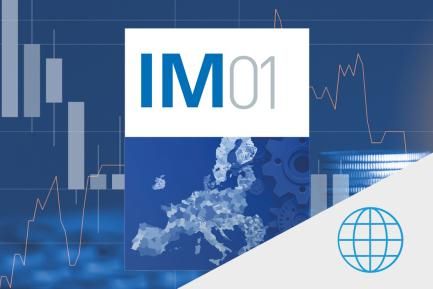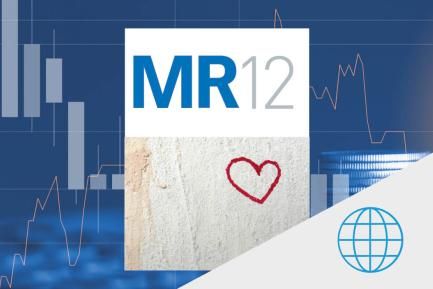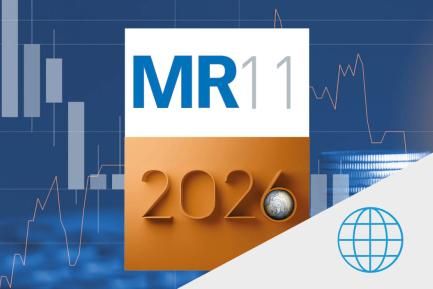
Love triangle in the international economy: activity, inflation and financial stability
In March, the bulk of the published indicators reiterated a picture of reduced weakness in the economic activity figures and greater inertia in core price pressures. However, the collapse of Silicon Valley Bank triggered an episode of financial turbulence and highlighted that the rapid and sharp rate hikes by the central banks are leading to tighter financial conditions.
The economic outlook gains new ingredients
In March, the bulk of the published indicators reiterated a picture of reduced weakness in the economic activity figures and greater inertia in core price pressures. However, the collapse of Silicon Valley Bank (SVB) triggered an episode of financial turbulence and highlighted that the rapid and sharp rate hikes by the central banks are leading to tighter financial conditions (for more details on this episode, see the Financial Markets economic outlook section of this report). Although its effect is not yet clearly visible in the macroeconomic data, the tightening of monetary policy indicates a certain shift in the profile of the economic outlook: more resilient data in the short term, but less buoyancy towards the end of the year, when the central banks’ rate hikes will have had time to filter through to the wider economy and their impact should be visible in the main economic aggregates. For instance, in the US the SVB episode triggered somewhat of a transfer of deposits from small and medium-sized banks to larger banks. Deposits remain high, but this development highlights the difficulties of the so-called «regional banking» segment in the US. Indeed, while it is an important subsector in commercial, industrial and real estate credit, it could weigh down the chances of a soft landing in 2023.

The labour market, a source of support
Energy prices (much more tempered than in 2022, but still high compared to pre-pandemic levels), high inflation, monetary tightening and its derivatives, and uncertainty continue to act as headwinds and hinder the performance of the world economy. However, in the face of these headwinds, labour markets in the major international economies remain strong, both in terms of job creation and low unemployment as well as in relation to wage buoyancy. In both the US and the euro area, the unemployment rates remain at or very close to the low points of the business cycle (3.6% and 6.6% in February, respectively) while labour participation rates are on the rise (74% and 79% among those under 65, respectively, in both cases around 0.5 pps more than a year ago). Wage growth accelerated to 5% at the end of 2022 in the euro area according to Eurostat data (specifically, the wage component of the hourly labour costs), while in the US various indicators place it between 4.6% (average hourly earnings) and 6.1% (Atlanta Fed indicator), somewhat below the peaks reached in 2022.

Change in the composition of inflation
In 2022, the dramatic surge in energy prices for European consumers (with growth in excess of 40% year-on-year at different times) became the main cause of the high inflation rates, both directly (the energy component accounted for 50% of all inflation) and indirectly (through its pressure on production costs, the rally in energy prices filtered through to the entire basket of goods and services, and it continues to do so). However, the upward pressure exerted by energy prices is fading, both due to base effects and because of the easing in energy prices which has consolidated in recent months). As a result, in March, euro area inflation fell sharply to 6.9% (–1.6 pps), with the first negative contribution from energy prices since 2021. This dynamic, which should continue for the remainder of the year, is leading to a shift in the composition of European inflation, with food, non-energy goods and services now playing a greater role. In fact, core inflation (which excludes energy and food) accelerated to 5.7% (+0.1 pps). This narrower gap between headline and core inflation is similar to the case of the US, where headline inflation fell in February to 6.0% year-on-year and core inflation stood at 5.5%.

Resilience of economic activity: European version
After avoiding a contraction in Q4 (stagnant GDP, thanks to the +0.9% quarter-on-quarter boost from public spending versus –0.9% in the case of private consumption), the euro area gained traction in Q1 2023, with the composite PMI in expansionary territory and accelerating (54.1 points in March). The improvement was widespread across different countries, but there was disparity between sectors (growth in services, with 53.0 points in the quarter as a whole, but contraction in manufacturing, with a quarterly average of 48.2). Other indicators show a more mixed performance. On the one hand, the Economic Sentiment Indicator (ESI) has slowed its recovery, stagnating in recent months (99.3 points in March, +5.5 points compared to the autumn, but –0.4 compared to January). On the other hand, the latest figures for retail sales and industrial production registered a month-on-month upturn in January 2023, but their year-on-year comparison reflects a relatively modest performance (+0.3% and +0.7%, respectively). All this paints a picture of a more resilient economy, but one which remains in a context of relative weakness. This situation was summed up well in the ECB’s forecast update in March: rather than a contraction of 0.1% quarter-on-quarter, the central bank now expects that GDP will manage to grow by 0.1% in Q1 2023.

Economic resilience: US version
The US economy, meanwhile, appears to remain stronger, and after registering an increase of 0.6% quarter-on-quarter in Q4 2022, the Atlanta Fed’s nowcasting model had suggested similar GDP growth for Q1 2023. However, the repercussions of the collapse of SVB will act as a new headwind, which the available indicators are not yet reflecting. In fact, in March the Conference Board’s consumer confidence index improved by 0.8 points, reaching 104.2, while the composite PMI moved away from contractionary territory
by climbing to 53.3 points (50.1 in February).

China consolidates its economic revival
The Chinese economy seems to be off to a strong start after the zero-COVID policy was abandoned, and all the indicators suggest that we will see a strong rebound in GDP in these first few months of 2023, leaving behind the economic stagnation of late 2022. In particular, various mobility indicators (such as metro travel) have jumped above their pre-pandemic levels, while the PMI indices have been well within expansionary territory throughout Q1 (average of 56.3 points in the services sector and 51.5 in the case of manufacturing). In addition, retail sales climbed by 3.5% year-on-year in January and February as a whole, with improvements across both goods and services. In this context of economic revival, the fourteenth National People’s Congress was inaugurated in March, with the government announcing a growth target of «around 5%» for this year, below the 5.5% and 6.0% of previous years.



